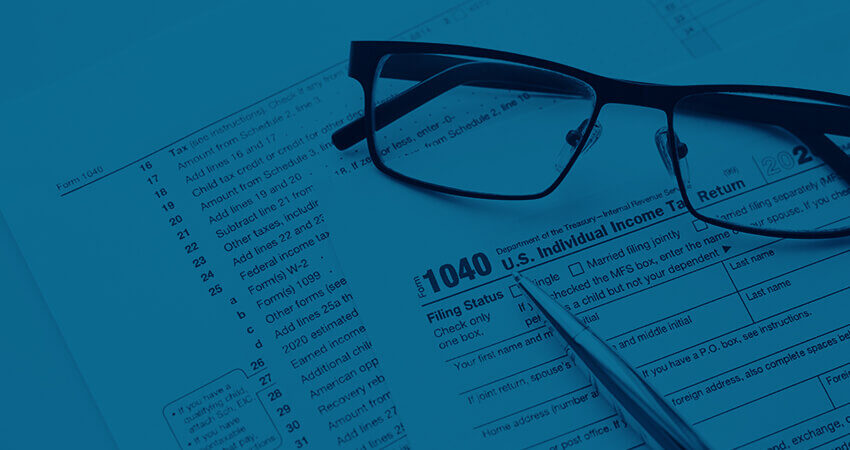What is IRS Form 1040?
Form 1040 is an IRS (Internal Revenue Service) form for an individual tax filing for United States citizens. The form calculates the taxpayers’ total income and decides how much is to be paid and refunded by the government.
The Tax Day is usually April 15 every year unless it falls on Saturday, Sunday, or any national and legal holiday. In such circumstances, it falls on the next business day.
You can also request an automatic extension by filing Form 4868 or by making an electronic payment.
Form 1040 consists of 2 pages with a total of 23 lines:
- The first page will ask for information about the taxpayer and dependents to specify an individual’s filing status.
- The second page reports income, calculates deductions and credits, adjusts income, and applies withheld funds from wages or estimate payments made for the tax liability.
Who needs to file Form 1040?
| As per our filing Status | What should be your age at the end of the year 2020 | What is gross income eligibility of filing the tax? |
|---|---|---|
| Single |
Less than 65 years 65 years or more |
$12,400 $14,050 |
| Married filing jointly |
Less than 65 years (both spouses) 65 years or more (one spouse) 65 years or more (both spouses) |
$24,800 $26,100 $27,400 |
| Married filing separately | Any age | $5 |
| Head of household |
Less than 65 years 65 years or more |
$18,650 $20,300 |
| Qualifying widow(er) |
Less than 65 years 65 years or more |
$24,800 $26,100 |
A resident files IRS tax Form 1040 and the nonresident alien must file Form 1040-NR. Those who change their residency status during the year from nonresident to a resident alien will have to file a special status called Dual Status Return as described in Publication 519, U.S. Tax Guide for aliens.
How to fill Form 1040?
-
Paper filing
- It is the universally accepted method to file the tax. You can download variants, schedules, and instructions from the IRS website. The final version of the form for the tax year was released at the end of January of the same year.
- Paper forms can be downloaded electronically in a PDF reader. Later, you can print it and file it manually.
- You can then send your forms in a single packet by mail or courier to an IRS address as per your location.
- IRS accepts returns that have stapled or paperclipped together. However, payment vouchers should not be stapled or paperclipped with the other return, as payments are processed separately.
-
Electronic filing is also known as e-filing
- Those whose income is $66,000 or less can file for free, electronically. There are some conditions for free filing.
- You can outsource to a tax professional accepted by IRS for an e-filing.
Key variants of Form 1040
- Form-NR:- Used by taxpayers who are nonresident aliens for tax purposes.
- Form-SR:- Used by taxpayers who are 65 and above.
- Form-X:- Officially, this is a Form to amend the US Individual Tax Return to make corrections in Form 1040, Form 1040A and Form 1040EZ.
- Form-V:- It is used as an optional payment voucher sends along with a payment for the balance due on the “Amount you owe” in line 1040.
*Note:- 1040-A and 1040-EZ were discontinued from the tax year 2018.
Form 1040 Schedules
| Schedule | Explanation |
|---|---|
| Schedule A | Itemized Deductions |
| Schedule B | Interest and Ordinary Dividends |
| Schedule C | Profit or Loss from Business (Sole Proprietorship) |
| Schedule D | Capital Gains and Losses |
| Schedule E | Supplemental Income and Loss |
| Schedule F | Profit or Loss from Farming |
| Schedule H | Household Employment Taxes |
| Schedule J | Income Averaging for Farmers and Fishermen |
| Schedule R | Credit for the Elderly or a Disabled |
| Schedule SE | Self-Employment Tax |
| Schedule 1 | Additional Income and Adjustments to Income |
| Schedule 2 | Additional Taxes |
| Schedule 3 | Additional Credits and Payments |
| Schedule 8812 | Additional Child Tax Credit |
Payment, refunds, and penalties
An individual can claim a tax refund in three-year. However, due payments need to be paid immediately. You can apply for a tax refund in next year’s taxes.
You can get an automatic extension until October 15 by filing Form 4868. There will be a penalty for not filing a tax return by April 15 if a taxpayer does not get any extension. If an individual has paid all taxes, there is no penalty for not filing.
Ending note
Do you find it difficult to file your tax returns? Outsource your Federal Tax Return preparation to an individual tax filing expert updated with the IRS guidelines and ensure a timely and profitable refund.
Source:

